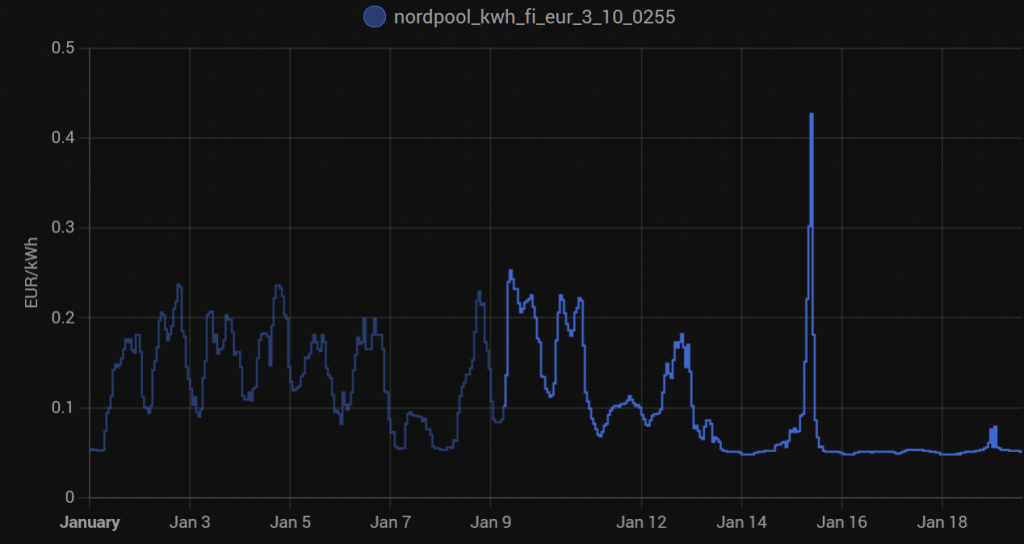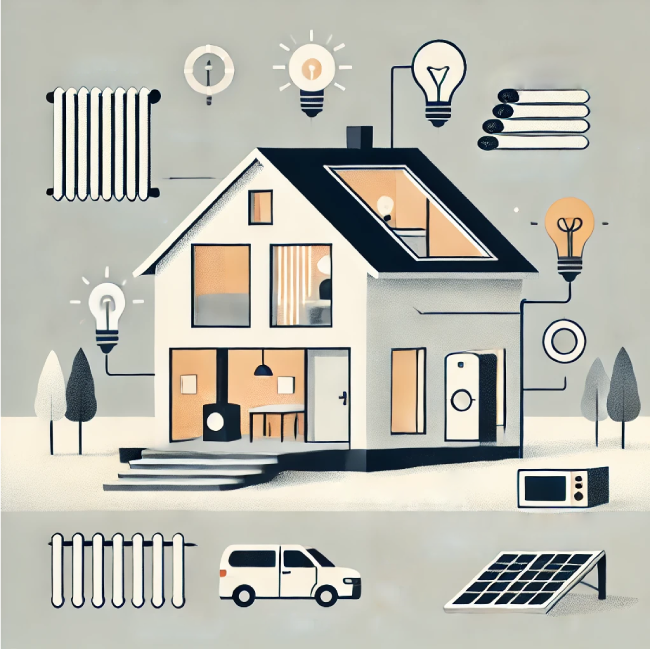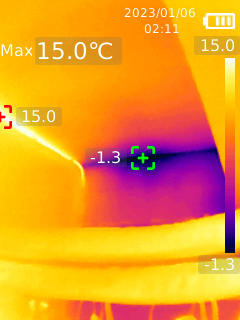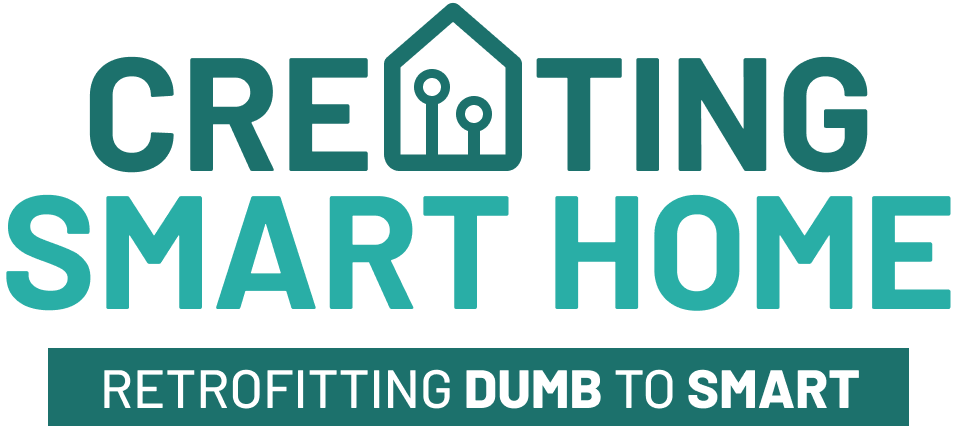
Guest Article: From the mind of Mihail – Common sense concepts for saving on energy costs
The price of energy is on the rise in many countries, prompting many people to seek ways to reduce their energy bills. Home automation offers tools to address this issue, but implementing these solutions is not as straightforward as it might seem at first glance.
This article is the first part of energy management series, focusing on energy savings by leveraging home automation and especially using Home Assistant. This series is, and will be, fully written by a new guest writer Mihail. So without further ado, let’s hear what he has to say! -Toni
Short intro on the new guest writer
My name is Mihail and I live in Southern Finland. Like Toni, I am drawn to home automation and electronics and I also have a strong IT and programming background as well as some engineering hobbies.
Understanding the Context: Living in Finland
This guide is written from the perspective of someone living in their own home with the ability to control heating and cooling systems. The house in question is located in Finland, where winter conditions are much harsher compared to Central Europe. This significantly impacts energy costs for heating the home.
Flexible Energy Contracts for the Average Consumer
For the average consumer, one of the most flexible options is to purchase electricity through a variable pricing contract based on Nord Pool or a similar energy stock market. Variable pricing allows homeowners to take advantage of fluctuating energy rates, potentially lowering their overall energy costs.

Many people are hesitant to adopt variable pricing due to concerns about daily cost changes and the possibility of high price spikes. The reality is that energy companies purchase their electricity they sell at fixed prices from these same stock markets. According to their profit reports, these companies do not operate at a loss, indicating that stock market-based energy is often the most cost-effective option available.
Furthermore, the natural price fluctuations can actually be beneficial when managed correctly. With the right tools—such as home automation systems that monitor and respond to real-time energy prices—homeowners can optimize their energy usage. By shifting energy consumption to periods when prices are lower, it’s possible to reduce overall energy costs without sacrificing comfort or convenience.
Embracing variable pricing contracts, combined with smart home automation, empowers consumers to take control of their energy expenses and make informed decisions that lead to significant savings.
Leveraging Home Automation Tools
Using home automation tools such as Home Assistant and all-in-one energy management systems, it is possible to create automations and make automatic decisions based on current conditions like temperature and energy pricing. These tools can optimize energy usage, leading to cost savings.
Introduction to Energy Saving Strategies
This guide serves as an introduction to a series of articles on energy-saving strategies. Future posts will delve deeper into each subsection and concept, providing working examples that can be used when implementing your own energy-saving strategy.
The Big Picture: Energy Usage in a Finnish Home
To start, it is important to understand the big picture of energy savings in a house. In the Finnish climate, heating and hot water are the most common sources of energy usage. Heating your home and hot water typically account for the majority of electricity consumption.

Understanding energy usage and how much energy different appliances and devices use is the first step in getting meaningful savings. Heating the home and hot water uses the majority of energy but there are many devices that use a surprising amount of energy.
Look out for appliances that are on all the time and use an energy meter to see how much energy they use. A computer home lab that is on all the time might use over 200 Watts of energy and that is around 144 kWh of energy (0,2kW*24h*30d) each month. These things add up and it is important to understand how these things add up. Other examples include an electric Sauna that commonly uses around 8-13 kWh each time it is used. Charging an electric car could also consume a lot of energy.
Some examples of my own measured energy usages
Full height Samsung freezer running at -20C: 320kWh / year
Full height Electrolux refrigerator: 144kWh/year
IT-home lab with multiple servers, network switches etc: 2000kWh/year*
Desktop PC with gaming grade components: 788kWh/year
Led lighting for the entire home: 184kWh/year
Hitachi heat pump (Heating in the winter and cooling in the summer): 3250kWh/year
Water heat pump for hot water and underfloor heating: 2150 kWh/year
* Average consumer amount of energy spent on a internet router and Home Assistant running on low-end pc or Raspberry PI is something about 300-600kWh/year.
Simple Adjustments for Immediate Savings
The easiest steps to save energy include lowering the indoor temperature by a few degrees and reducing hot water usage. Pay attention to devices that are on all the time and see if they could be turned off completely when not in use.
Air leakage could increase heating costs in a cold climate so it is a good idea to see if all window and door seals are installed correctly and are not leaking cold air. A thermal camera could help in spotting where the cold is leaking in the house. They can be borrowed or bought cheaply on market places such as aliexpress. It was a surprize to find out that some windows were missing part of the weather stripping completely.

While these basic measures are widely known, this guide will focus on more advanced strategies enabled by home automation and Home Assistant.
Maintaining a Constant Indoor Temperature
Maintaining a constant indoor temperature in a home requires a steady amount of energy, primarily influenced by the home’s insulation and the external weather conditions. The key factor here is the temperature difference between the inside and outside; effective insulation acts as a crucial barrier, minimizing heat loss and reducing the energy needed to keep the interior warm.
However, there are strategies to optimize energy usage and lower costs by redistributing the energy required for heating and hot water. Instead of maintaining a consistent energy consumption of, for example, 2 kW per hour throughout the entire day, you can adjust your usage based on fluctuating energy prices. This means utilizing more energy during cheaper periods and conserving energy when prices are higher.
In practice, this approach results in only slight indoor temperature variations of about 1-2°C during the harsh Finnish winter. The house is constructed out of bricks and has underfloor heating as well as a heat pump it takes a long time to heat up or cool down.

By programming the heating system to reduce energy usage during the five most expensive hours each day, significant savings can be achieved without compromising overall comfort. This method leverages home automation tools to monitor energy prices in real-time and adjust heating patterns accordingly, ensuring that the total energy required to heat the home remains consistent while optimizing costs.

To be continued with detailed examples of leveraging automation to save energy in the next part of the series..
